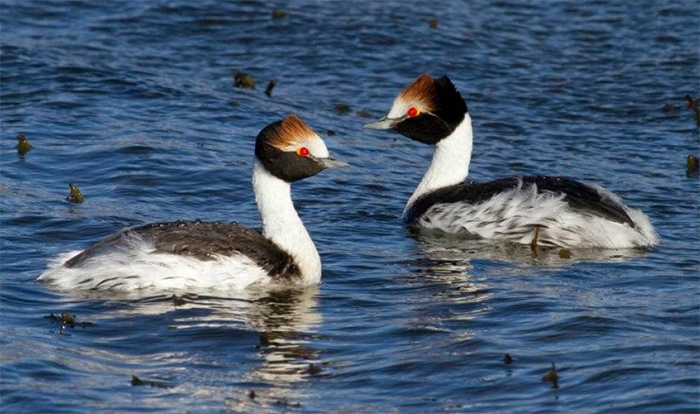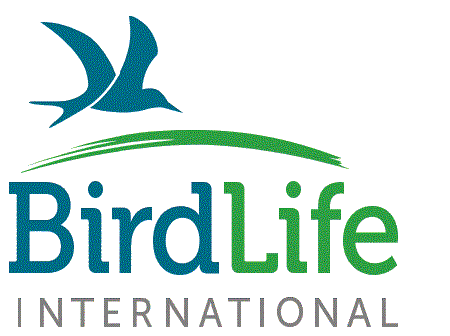Hooded Grebe threatened by dam construction
An emergency motion passed at the IUCN World Conservation Congress appeals to Argentinian Government to save Critically Endangered bird from badly-planned hydroelectric dams.

The Hooded Grebe Podiceps gallardoi, a species already under pressure from the spread of invasive species and with less than 500 breeding pairs remaining, is facing a new and imminent threat from the proposed construction of two hydroelectric dams on the Santa Cruz River, Argentina, warns conservation organisation Aves Argentinas. An international commitment made today gives fresh hope for this bird, which was only discovered 42 years ago.
Found only on remote lakes of the Patagonian wilderness during the breeding season, the Hooded Grebe (Macá Tobiano in Spanish) was thought to be largely isolated from human threats. However, in winter it searches for food in only three areas – one being the estuary of the Santa Cruz River, now threatened by the proposed dams.
Houses have already been built along the river banks to house construction workers, but no damage to the river has begun yet. However, on 9 September, it was made public to the Argentinian media that President Macri will be relaunching the dam proposal next week.
“The time to act is now,” said Patricia Zurita, Chief Executive of BirdLife International. “We cannot afford to lose the habitat of Argentina’s beloved Macá Tobiano (Hooded Grebe)”.
The development is currently moving forward without a proper Environmental Impact Assessment or Strategic Environmental Assessment conducted by the Santa Cruz government. The river named after this region is Argentina’s only glacial river and following new information compiled by Aves Argentinas (national Partner of BirdLife International), the area downstream was recently declared an Important Bird & Biodiversity Area and global Key Biodiversity Area due to its ecological importance.
The river carries a huge amount of fertile sediment downstream to the estuary. With two dams blocking this natural process, there will be a complete change to the river flow and aquatic ecosystems of the area, resulting in the loss of wintering habitat and changes in food availability. In addition to the Hooded Grebe, the estuary harbours three other species listed as Near Threatened: Magellanic Penguin Spheniscus magellanicus, Chilean Flamingo Phoenicopterus chilensis, and Magellanic Plover Pluvianellus socialis; as well as many others like the endangered subspecies of Red Knot Calidris canutus rufa.
Today Aves Argentinas warned the conservation community with an announcement at the IUCN World Conservation Congress, currently underway in Hawaii. An emergency motion was proposed by Ana Di Pangracio (Deputy Executive Director, Fundación Ambiente y Recursos Naturales (FARN)) that called for a suspension of dam construction until both suitable and updated Environmental Impact and Strategic Environmental Assessments have been completed, and was immediately passed.
Speaking earlier at the Congress, Sergio Bergman, Argentinian Minister for Environment, said that Argentina has “returned” to the international conservation stage, and insisted that Argentina remains committed to the goal of “zero extinction”. The action resulting from this new motion will be the first test of this commitment for the Hooded Grebe.
In Argentina, a coalition of NGOs, including Aves Argentinas and FARN, has formed to discuss the issues presented by the impact of the dams planned for the Santa Cruz River, and to analyse in depth the necessity and feasibility of the project before it is too late.
The dams proposed by the government are linked to foreign investment, and would be constructed by a consortium of companies: Argentinian-based Electroingeniería and Hidrocuyo, alongside the Chinese Gezhouba Group Corporation.
The possibility of building the hydroelectric dams was originally investigated in 1950, but scrapped because of their cost and high environmental impact. The dams are still considered low priority in Argentina’s future energy mix.
A new report launched this week by Río Santa Cruz Sin Represas clearly shows that for the same price as the proposed dams, a modern renewable energy combination that includes the use of well-placed wind energy would yield a 55% greater power output per year, without threatening Argentina’s endangered birds. Also a 2014 Oxford University study found that large-scale dams are uneconomic.
“The campaign of the current Argentinian government remarked the importance of sustainability and the promotion of renewable energy”, says Hernán Casañas, Chief Executive of Aves Argentinas. “The serious impact of these hydroelectric projects should be considered contrary to other conservation activities that government itself has promoted, including the protection of the Hooded Grebe.”
The Hooded Grebe is already in severe trouble, having declined by over 80% in the last 25 years due to the introduction of the American Mink, which decimates the Patagonian breeding colonies. Aves Argentinas, working with local NGO Ambiente Sur have set up teams of volunteer ‘Colony Guardians’ who watch over the breeding sites.
Aves Argentinas has been working for more than 7 years on the conservation of the species, developing an intensive invasive predator control programme, and has invested nearly US$ 500,000. In 2013, the Argentinian Government declared a new 52,000 hectare protected area: the Patagonian National Park, in part to protect the breeding colonies of the Hooded Grebe.
“The Patagonia National Park will be a centre for the economic development (eco-tourism) of four locations in Santa Cruz”, says Hernán Casañas. “These proposed dams are jeopardising the flagship species of the Park, a species which the people of Santa Cruz love as a symbol of conservation in Patagonia.”
BirdLife International
September 2016






